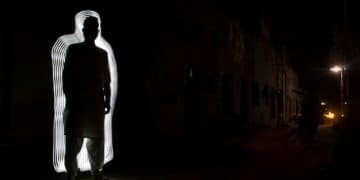Splatterpunk: Exploring the Extreme Boundaries of Horror and Transgression

Splatterpunk: Examining the Extreme Boundaries of Horror and Transgression delves into a subgenre of horror literature and film characterized by graphic violence, transgressive themes, and a focus on the human body’s vulnerability. It challenges conventional horror tropes, pushing boundaries and exploring the darkest aspects of human nature.
Are you ready to venture into the darkest corners of horror? Prepare yourself for a journey into the visceral and transgressive world of Splatterpunk: Examining the Extreme Boundaries of Horror and Transgression. This subgenre isn’t for the faint of heart, and we will explore together the movement that challenges conventional horror and pushes boundaries.
Splatterpunk is more than just blood and guts; it’s a raw, unflinching look at humanity’s capacity for violence and the fragility of the human body. Are you prepared to delve into this extreme form of horror? Let us explore the depths of this genre.
What is Splatterpunk: Examining the Extreme Boundaries of Horror and Transgression?
Splatterpunk emerged in the 1980s, a rebellious reaction against the more restrained horror of the time. It’s characterized by its graphic depictions of violence, body horror, and transgressive themes.
Authors like Clive Barker, John Skipp, Craig Spector, and David J. Schow are considered pioneers of the subgenre. Their work often explored the limits of human endurance and the darkest aspects of the human condition.
Key Characteristics of Splatterpunk
Let’s examine the elements that define splatterpunk.
- Graphic Violence: Splatterpunk doesn’t shy away from depicting violence in explicit detail.
- Body Horror: The human body is often a site of transformation, decay, and mutilation.
- Transgressive Themes: Splatterpunk frequently explores taboo subjects like sex, death, and social deviance.
- Realism: Despite the extreme content, splatterpunk often strives for a sense of realism, grounding the horror in tangible human experiences.
Splatterpunk: Examining the Extreme Boundaries of Horror and Transgression often featured characters who were themselves marginalized or outsiders, further blurring the lines between victim and perpetrator. It challenged readers to confront uncomfortable truths about themselves and society.
In conclusion, splatterpunk is a subgenre that seeks to shock, disturb, and provoke, pushing the boundaries of horror to their absolute limits.

The Origins and Evolution of Splatterpunk
The rise of splatterpunk can be attributed to several factors, including the influence of punk rock, the New Wave movement, and a growing dissatisfaction with mainstream horror.
Authors sought to break free from the established conventions and explore darker, more challenging themes. This led to the creation of stories that were often controversial and polarizing.
Early Influences
Let’s reflect on some of the books and artists that helped shaped the splatterpunk subgenre.
- Punk Rock: The DIY ethos and anti-establishment sentiment of punk rock resonated with splatterpunk authors.
- New Wave: The experimental and boundary-pushing nature of New Wave cinema influenced the visual style and thematic concerns of splatterpunk.
- Horror Literature: Authors like H.P. Lovecraft and Ramsey Campbell paved the way for splatterpunk with their explorations of cosmic horror and psychological dread.
As Splatterpunk: Examining the Extreme Boundaries of Horror and Transgression evolved, it began to incorporate elements of other genres, such as science fiction, fantasy, and crime fiction. This led to a diverse range of stories that challenged the traditional definition of horror.
In conclusion, the origins of splatterpunk lie in a desire to break free from convention and explore the darkest aspects of human nature, drawing inspiration from various cultural movements and literary traditions.
Key Authors and Works in Splatterpunk
Numerous writers have contributed to the splatterpunk subgenre, each bringing their unique vision and style to the table.
Some of the most influential authors include Clive Barker, known for his visceral and imaginative horror; John Skipp and Craig Spector, who collaborated on several groundbreaking novels; and David J. Schow, whose short stories are known for their dark humor and transgressive themes.
Notable Works
Let’s check out some of the most significant books from the splatterpunk genre.
- Clive Barker’s *Books of Blood*: A collection of short stories that redefined the boundaries of horror.
- John Skipp and Craig Spector’s *The Light at the End*: A post-apocalyptic novel that explores the depths of human depravity.
- David J. Schow’s *Silver Scream*: A collection of short stories that blend horror with dark humor and transgressive themes.
These authors and their works helped to establish Splatterpunk: Examining the Extreme Boundaries of Horror and Transgression as a distinct and influential force in horror literature. Their willingness to push boundaries and challenge conventions paved the way for future generations of writers.
In conclusion, the key authors and works in splatterpunk represent a diverse range of voices and perspectives, united by their commitment to exploring the darkest aspects of human nature.

The Impact and Influence of Splatterpunk
Splatterpunk has had a significant impact on the horror genre, influencing countless writers, filmmakers, and artists.
Its willingness to challenge conventions and explore transgressive themes has paved the way for a more diverse and experimental approach to horror. It also influenced the extreme horror movement that appeared in more recent years.
Influence on Mainstream Horror
Let’s examine how splatterpunk changed horror across all medias.
- More Graphic Depictions of Violence: Splatterpunk normalized the depiction of graphic violence in horror, influencing subsequent works in literature and film.
- Exploration of Transgressive Themes: Splatterpunk paved the way for a more open and honest exploration of taboo subjects in horror.
- Greater Focus on Body Horror: Splatterpunk helped to popularize body horror as a distinct subgenre of horror.
Splatterpunk: Examining the Extreme Boundaries of Horror and Transgression challenged the status quo and pushed the boundaries of what was acceptable in horror. Although divisive, it left an indelible mark on the genre.
In conclusion, the impact of this extreme subgenre can be seen in the countless works that have followed in its wake, pushing boundaries and exploring the darkest aspects of human nature.
Criticisms and Controversies Surrounding Splatterpunk
Splatterpunk has faced its share of criticism and controversy over the years.
Some critics have accused it of being gratuitously violent and exploitative, while others have praised it for its willingness to confront uncomfortable truths about human nature. Many argue that the violence is just shocking for the sake of being shocking.
Ethical Questions
Let’s consider the ethics of splatterpunk and extreme violence in horror.
- Gratuitous Violence: Some critics argue that the violence in splatterpunk is excessive and serves no purpose beyond shock value.
- Exploitation: Others argue that splatterpunk exploits the suffering of its characters for the sake of entertainment.
- Moral Depravity: The themes are often controversial and divisive, given their extreme nature and presentation.
Despite these criticisms, Splatterpunk: Examining the Extreme Boundaries of Horror and Transgression has continued to attract a dedicated following. Many readers appreciate its honesty, its willingness to challenge conventions, and its unflinching exploration of the darkest aspects of human nature.
In conclusion, the criticisms and controversies surrounding it reflects the complex and challenging nature of this subgenre.
| Key Point | Brief Description |
|---|---|
| 🔪 Origins | Emerged in the 1980s as a reaction to restrained horror. |
| ✍️ Key Authors | Clive Barker, John Skipp, Craig Spector, David J. Schow. |
| 🩸Impact | Influenced horror literature and film with the depiction of explicit and graphic violence. |
| 🤔Criticism | Accused of gratuity, exploitation, and moral depravity. |
Frequently Asked Questions
Splatterpunk is defined by its graphic violence, body horror, transgressive themes, and a sense of realism, making it a challenging subgenre within horror.
Key authors include Clive Barker, John Skipp, Craig Spector, and David J. Schow, known for pushing boundaries and exploring the darkest aspects of humanity.
Splatterpunk normalized graphic depictions of violence, opened the door for transgressive themes, and popularized body horror, influencing countless works.
Critics often accuse splatterpunk of being gratuitously violent, exploitative, and morally depraved, questioning its ethical merit as a form of entertainment.
Despite criticisms, it maintains a dedicated following, appreciated for its unflinching honesty and exploration of the darkest aspects of human nature, continuing to influence horror.
Conclusion
Exploring Splatterpunk: Examining the Extreme Boundaries of Horror and Transgression reveals a subgenre that has significantly shaped the horror landscape. Despite its controversial nature and themes, it remains an important and influential part of horror.
Ultimately, this exploration of splatterpunk allows us to appreciate its impact on the genre and the reasons behind its enduring appeal.





